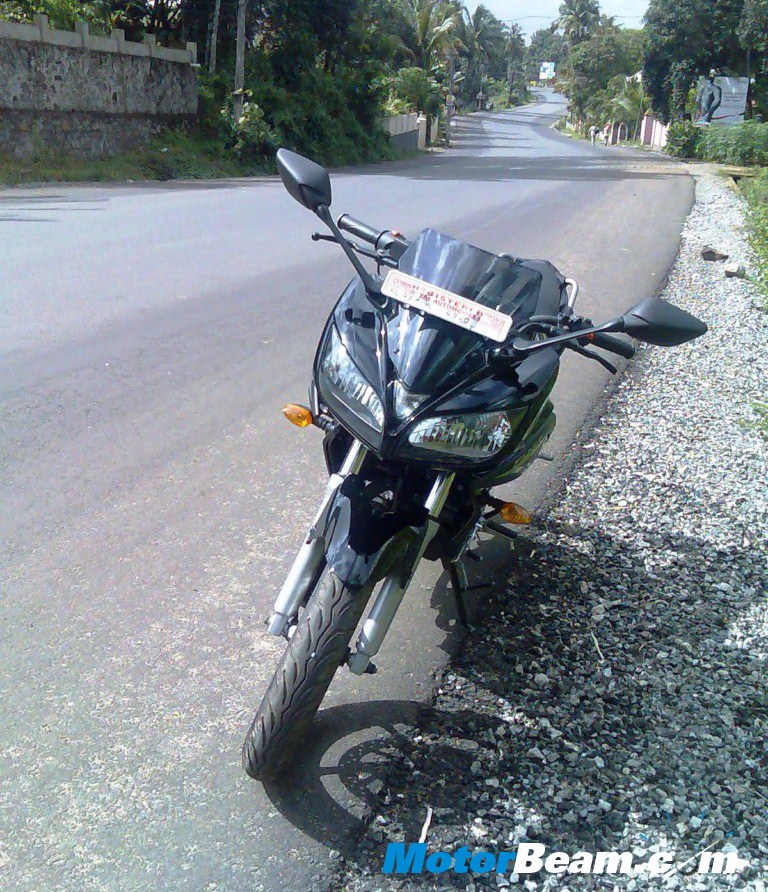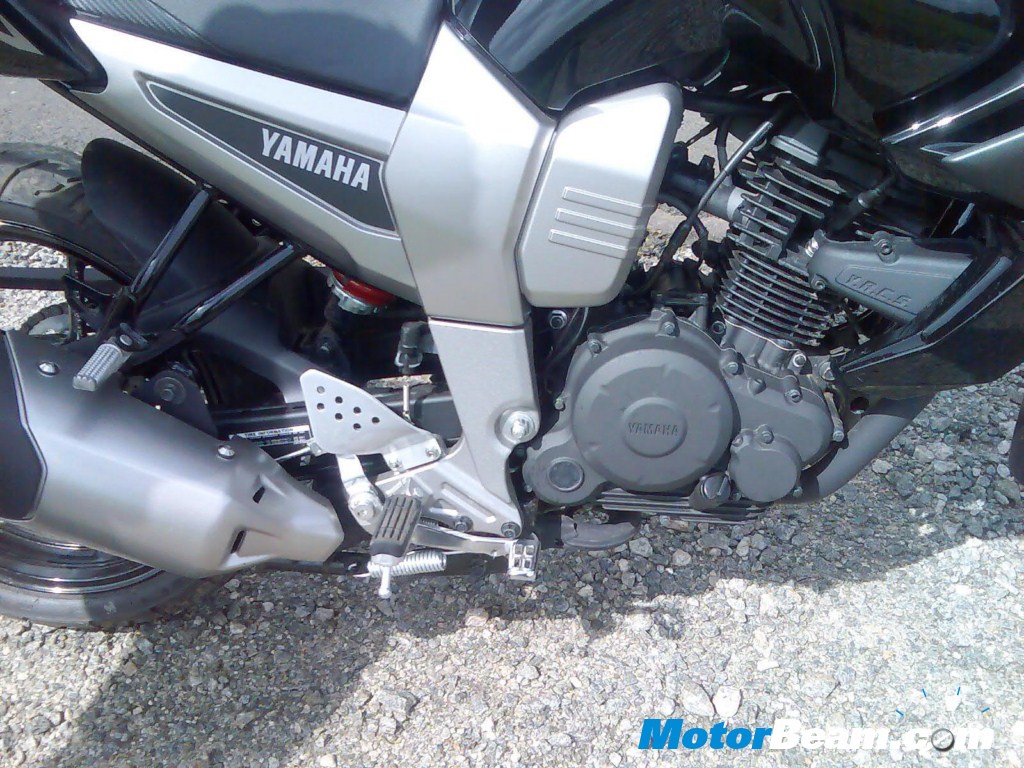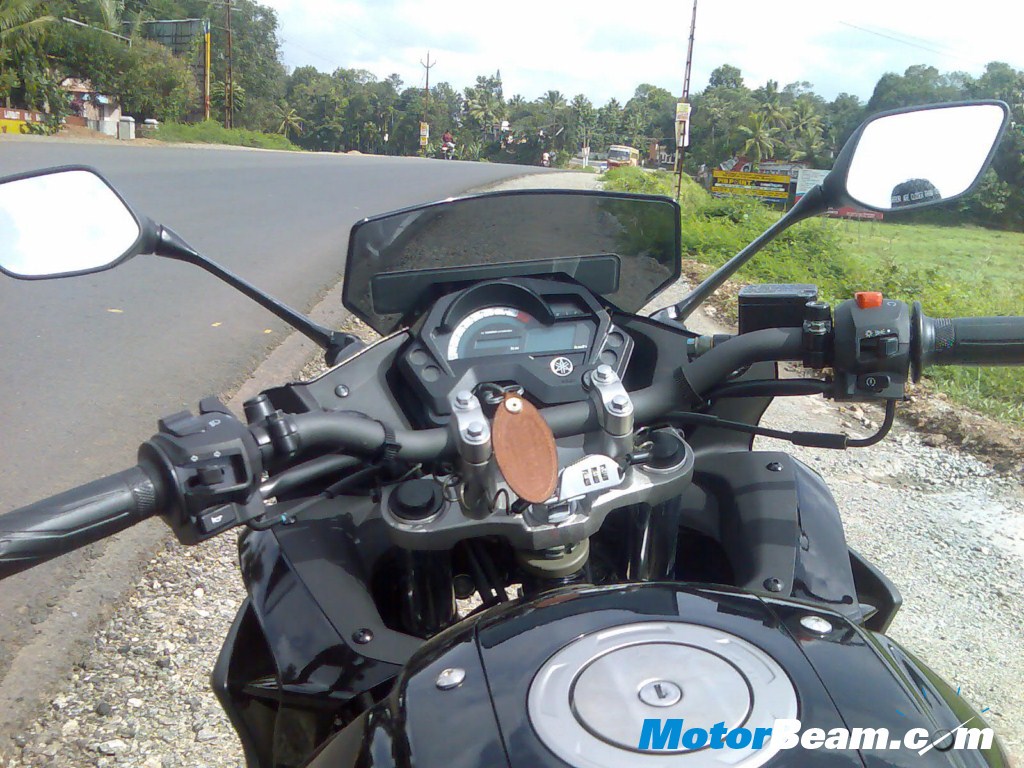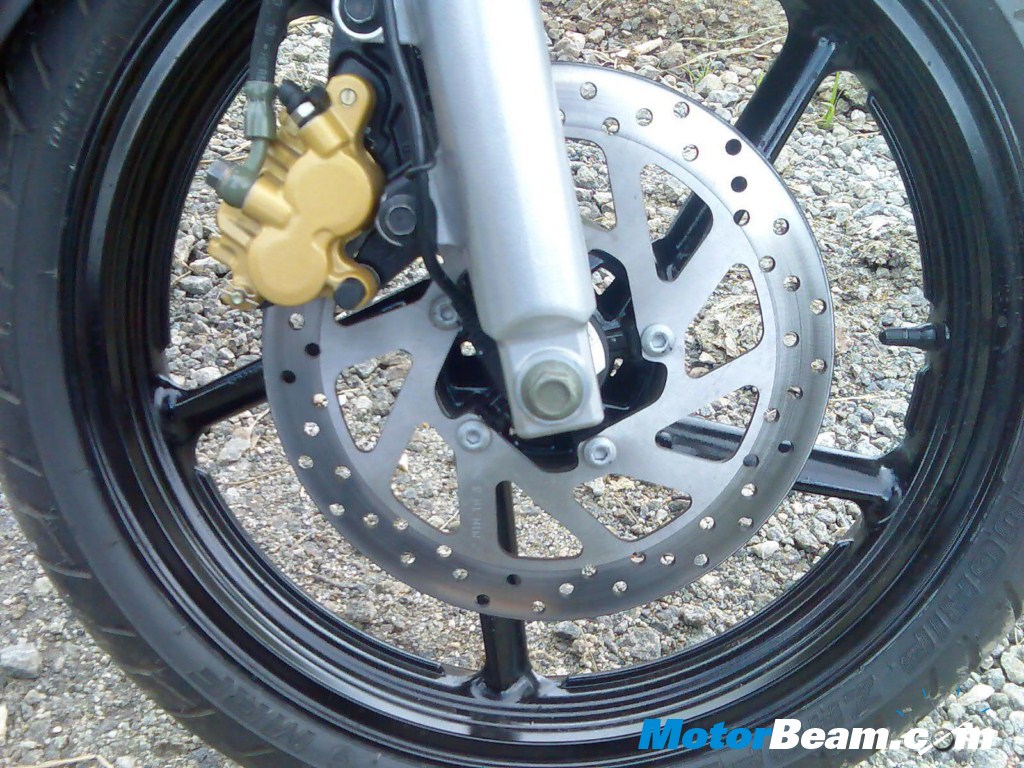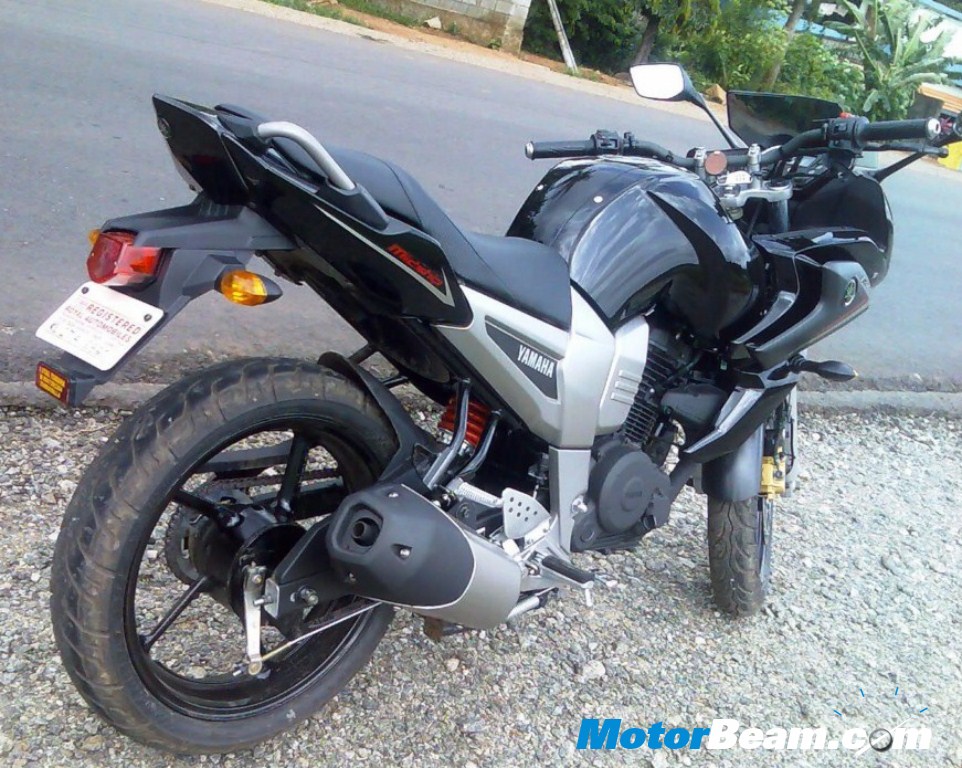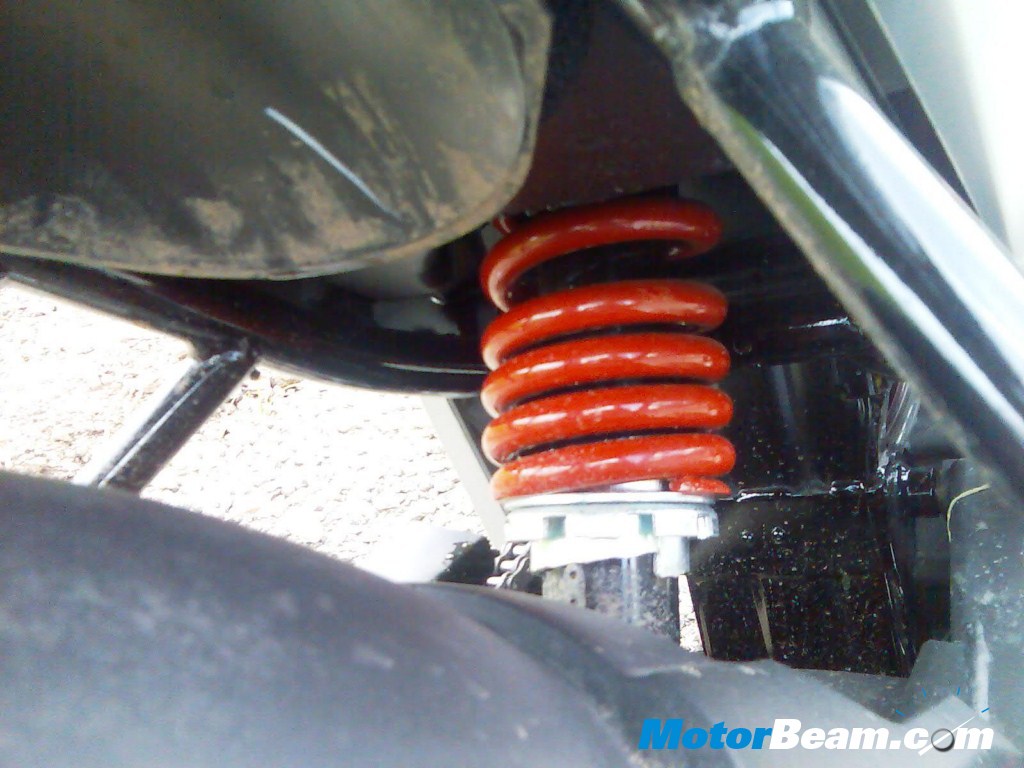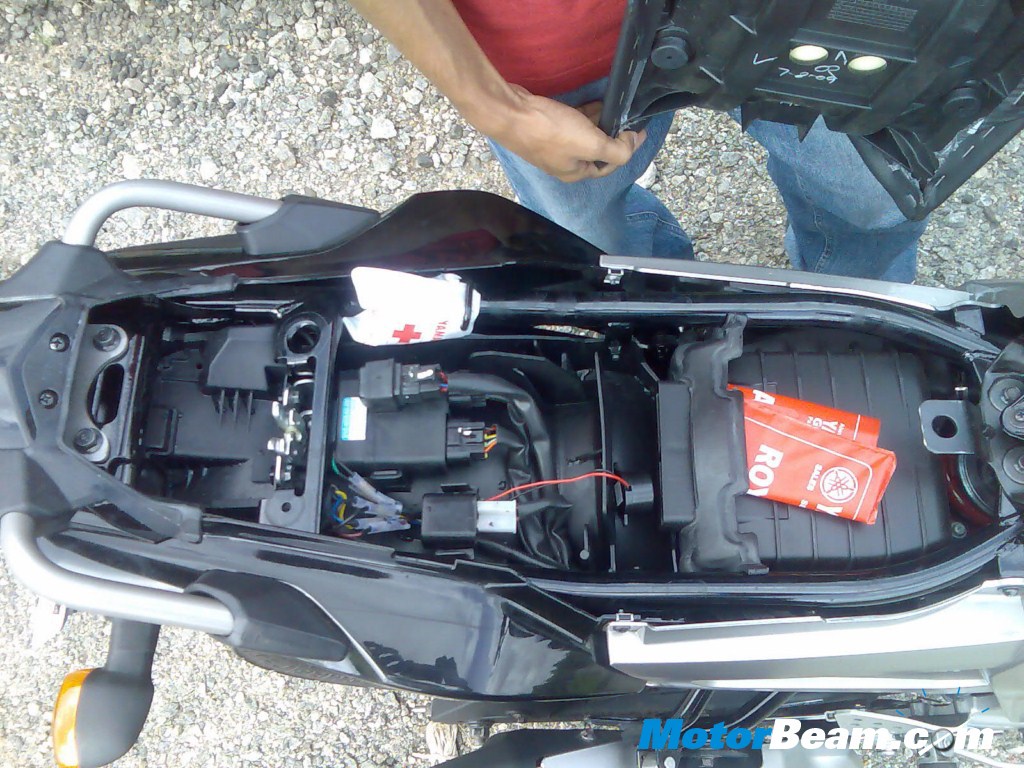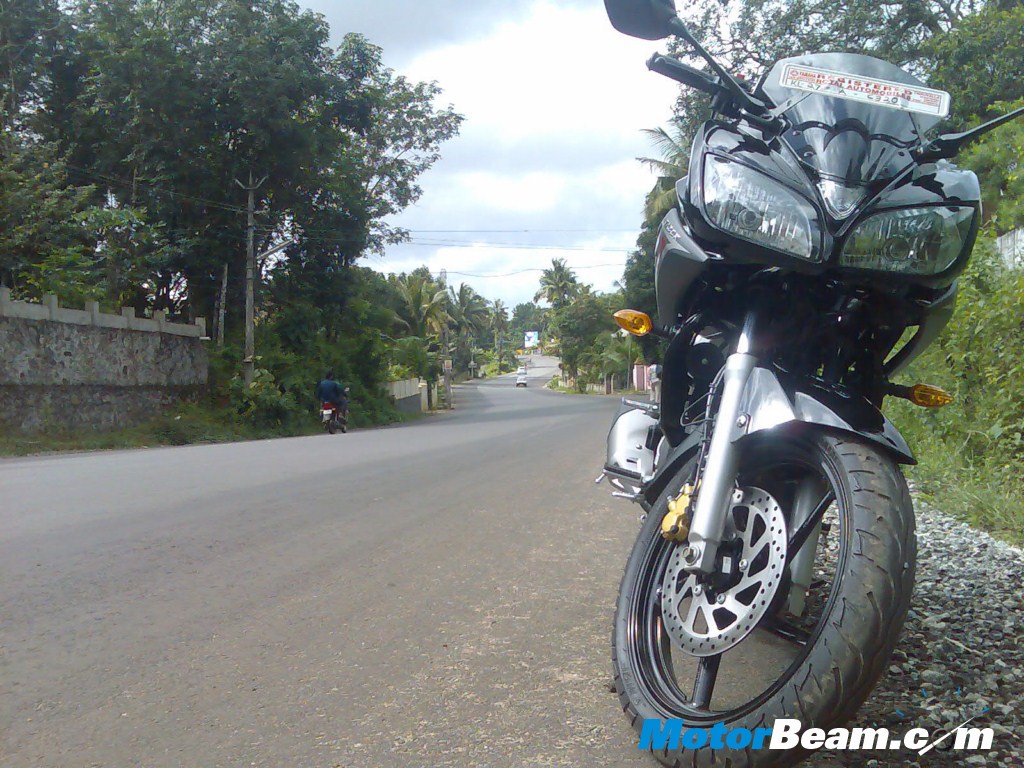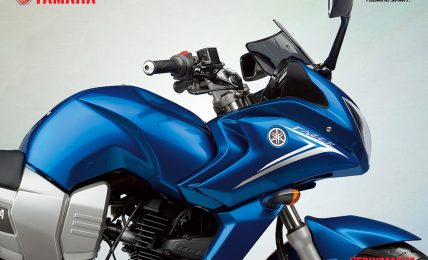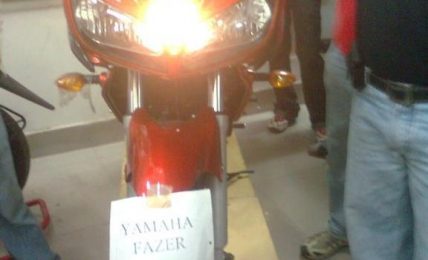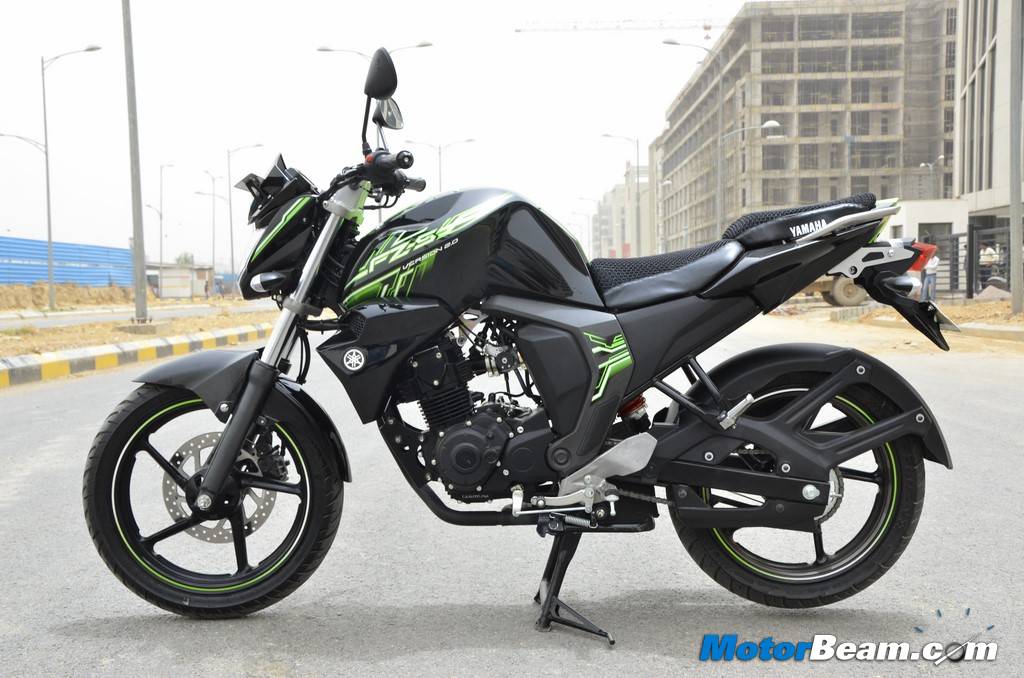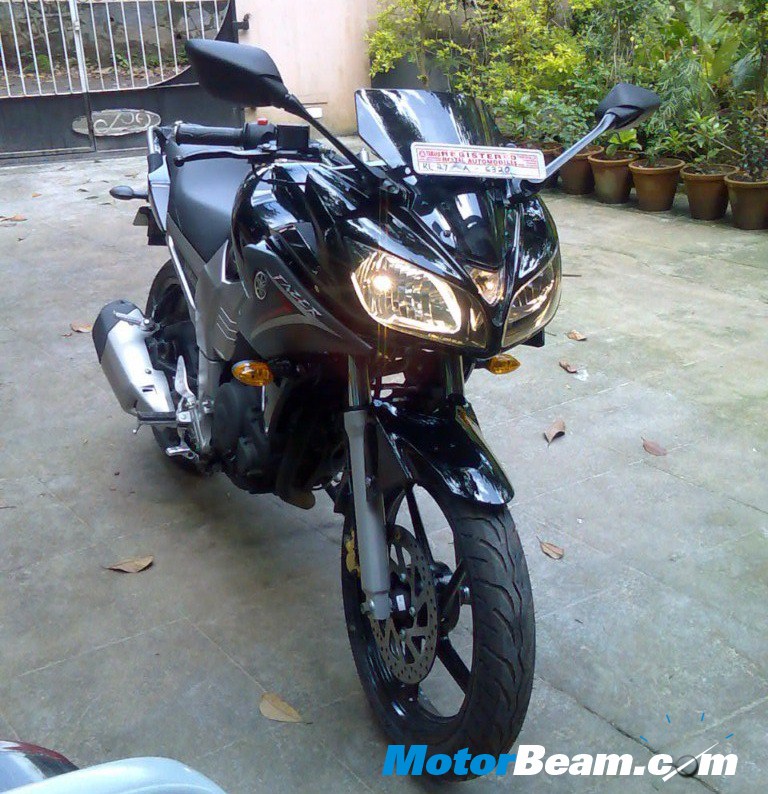
Bike tested: 2009 Yamaha Fazer 150
Price OTR Mumbai: Rs. 81,337/-
As we all know, the Yamaha Fazer was launched at a time when the FZ series of bike by Yamaha were gaining in popularity. It’s been advertised with the punch line ‘touring spirit’ and ‘may the weekend never end’. Our friend, Gordon Graham, let us borrow his bike for a day and we took if for a ride to Ernakulam and back, covering over 250 kms in a single day. Here we share all our experiences, both good and bad, with the Yamaha Fazer.
For starters, Yamaha have taken the front end from the R15 and have managed to make it look much sportier and more massive with the help of the superb styling of the FZ, incorporating massive shocks and wheels up front. But that’s where the similarity ends with the R15. The engine used is the same 153cc Four stroke, 2 valve engine featured on the FZ which is quite a contrast to the liquid cooled monster-of-an-engine that’s used in the R15. Overall the look of the Yamaha Fazer is something really eye catchy and its presence is something yet to be matched by any other 150cc machine.
Performance and Drivability
The engine, borrowed from the FZ series is a smooth, vibration free unit that has been tuned to possess all the power at the mid range. What this means is that unlike other bikes, you wouldn’t have to redline it all the time to get the best out of it or for the best drivability. Power is always on tap as long as you are anywhere below 90Km/h. Go over this speed and you wouldn’t find as much pulling power as what you would get when you’re at lower speeds. Its character is defined quite well, it’s not meant to be a scorcher or a track tool. The Yamaha Fazer is a relaxed touring bike and this makes it quite likeable for daily use. It proves for once that bikes can go fast without all the hullaballoo. Acceleration is quite decent for a 150cc weighing about 155 kg’s (with fuel and fluids).
If you are looking for adrenalin pumping action, then look elsewhere, its relaxed manners won’t really set your pulse racing as much as other bikes like the RTR or the R15. Overtaking usually doesn’t require a downshift even if you are in the top gear and the Yamaha Fazer does it with the least of fuzz and commotion of any 150cc bike. Of course, this is as long as you keep it below 6500 RPM since all the torque is best felt around that rev range. Cruising activities are a pleasure on this bike as its well designed fairing, along with the mass centralisation concept, provides you with a level of confidence that is simply reassuring. Be aware though, it isn’t the most flickable of all bikes due to its inherent heaviness. But its straight line stability and poise is commendable.
The gearbox and clutch are easy to use. The single gear shift lever has an adequate amount of feel and so far after having driven all these kilometres, we have yet to find a false neutral or a mis-shift. On the way, I encountered an emergency situation where I had to brake from over 100 km/hr to a standstill due to a drunken cyclist on the highway, if it was for any other bike, I would have been writing this from behind bars or even from a hospital. All full braking force, 60% front, 40% rear at high speed, you could feel the rear end losing weight and slightly lifting up from the ground resulting in screeching but the front compensates that by providing a firm footed stop with truly amazing grip from the wide custom MRF Reuz tyres. You could barely feel the front losing grip even at such high speed with all your fingers grasping the brake lever with a great amount of strength. Even though the brakes of other bikes like the RTR or even the Karizma are superior in dimensions, it’s the tyre quality that lets the rider down when it comes to braking. In the case of the Yammie, those duties are done with far more authority and poise than any other 150cc or even bigger bike.
On the highways, I personally tried to test the Fazer’s top speed; I weigh about 78 lilos, with me on board, the speedo crossed the 80 km/hr mark really quick and soon it touched a 100, at full throttle from this point on, the speed increased by 1 km/hr every second until it reached 110. After that, the climb becomes even slower, requiring a really long stretch of road to reach the 115 mark. You could feel the engine trying really hard to make you go any faster but eventually, it just stops the climb at 117 Km/h. Again the top speed would depend on the wind conditions and rider weight, the owner of the bike claimed an achieved top speed of 124km/h, which was because he weighed just 50Kg’s.
Yamaha also claims that they have tested and perfected the front fairing in wind tunnels. This seemed like a bold claim for what is basically a 150cc bike, I wasn’t quite convinced until I experienced it myself, The highway in this area had no dividers between the two lanes, hence, once I was doing over a 100 and I saw a truck coming my way, I expected it to be blown away by the wind, but no, it just followed its path like a train. To give you an example, other 150cc bikes without fairings would significantly be pushed around at those kind of wind speeds. The Yamaha Fazer faces it in a rock solid fashion. This shows that the Yamaha’s claim of wind tunnel testing was credible. This is really something that can please those wanting to ride fast. Speaking of fast, the bike used up 8 litres of fuel to travel a total of 290 Km, this was after a combination of high speed riding on the highway, city riding and economical riding, which translates into an average of roughly 36Km/litre.
Ride, Handling and Ergonomics
The ride quality of the Fazer over cracked, broken damaged roads can be best described as brilliant. If it weren’t for the hard seat, the bike could take a beating for miles and miles without tiring the rider. I believe its the weight of the bike combined with the great suspension and humungous rear tires that makes it so comfortable across any type of terrain. It’s really a pleasure to ride on any type of road. At high speed, if you were to meet a pothole, you would usually expect to hear a loud thud two times while being tossed around. On the Fazer, it’s just a faint ‘dhak dhak’ without any panel vibrations/ noises from any parts. Regarding the seats, the bike was really new, with 1200 km on the odometer. So the foam could soften with time and use. But otherwise, the ride quality can be compared to the Innova in a way because it just glides over surfaces.
But the best part of it is that the soft suspension also works well when you meet the twisties. I found that the bike followed the desired line even while taken sharp turns at over 60 km/h over bumpy road. For long wheelbase bikes, this isn’t always the story, the kind of confidence the machine inspires in these situations is note worthy. At factory condition, the suspension is set to the medium setting, which offers the best combination of comfort and handling. This of course, can be adjusted for better handling or better comfort depending on your riding style. Yamaha provides a tool which you can use to adjust the suspension to suit your needs so you can simply do it on the way.
The riding position is good, but it can be tiring on long trips just because of the foot pegs being positioned towards the rear. This would hurt your knees if you would like to go nonstop for over a 100Kms. Even though, this is marketed as a light tourer, the foot pegs are more sport oriented than comfort. This has the advantage of being able to lend the bike great lean angles but has the disadvantage of reducing rider comfort on long trips. Its just a simple trade-off which can be lived with. The rear seats are as just as big as an average person’s palm which isn’t a really good thing. If you have a backpack and a pillion, he would have to sit on the grab rails to go anywhere. Also the due to the high angle of the rear, the person sitting behind wouldn’t really be able to put his foot down to help the rider in traffic.
Under the seat, there is no storage space for anything substantial and you would definitely need a backpack for your touring purposes. Also because the tank is made of fiber, most magnetic tank bags, widely used for touring purposes, would be essentially non usable with this bike.
Negatives
The bike performs fairly well, handles great and looks really good. Those were the positives. It does, however, have a few niggles which you would have to put up with in case you are planning to own one.
It is expensive. At 80,830 Rs (on the road – OTR), you could find it hard to put down that kind of cash for what is essentially a 150cc bike. With that kind of money, you could get a 223cc Karizma R (Rs. 81,253),or an Apache RTR 180 (Rs. 73,918),or a Bajaj Pulsar 220 (Rs 78,180), (all prices are on the road for February, 2010, prices may vary by city). All these alternative bikes feature top speeds well over 120 Km/h and performance figures capable of giving chills to even the most seasoned riders and mileage the same as or even better than the Fazer
But the primary reason for the high cost of the Fazer is its design. Park it next to a Pulsar 220 and immediately the differences are crystal clear. The fairing, wheels, lights, speedo console, design, and every other visual aspect of the Fazer makes it stand miles ahead of the Bajaj in terms of quality and craftsmanship.
The headlights on the Fazer can be switched on only one at a time. A simple solution is to place the hi/lo beam switch at the middle position. This can turn on both lights even when pressing the ‘pass’ button. This isn’t really recommended as placing it that way would leave you with both the hi and lo beam on. This is too bright for practical use and can distract drivers.
The pillion seat as featured on the FZ is really small. This can be a cause of concern if you usually travel with a partner. The Fazer also lacks the ladies footrest which is featured on almost all other Indian bikes.
The efficiency: The bike delivers an average of 35 – 40Km/l depending riding conditions. This is a reason why most people opt for other alternative, high capacity bikes since they too offer the same efficiency figures while offering better power and performance.
The power: For its engine size, it performs very well, but as a touring machine, it definitely needs a lot more. This is particularly evident when the bike crosses the 100Kph mark after which it struggles to go any further even with a single rider. I found myself being honked from the behind and overtaken by Indica’s, Innova’s and Maruti’s.
Conclusion
The bike is good, no doubt, but to compete with the current offerings in the market, the Fazer needs to be much more than that, based on the price its asking. The bike is undoubtedly, hands down, the best looking 150cc in the market. Go for it if you are looking for a bike with the best ride comfort, quality, design and refinement which is if you can put up with the low mileage and high price tag.


